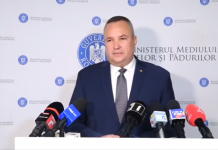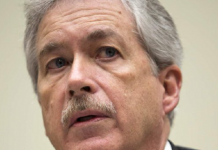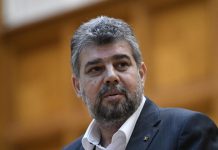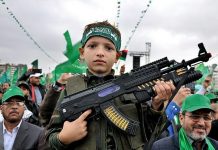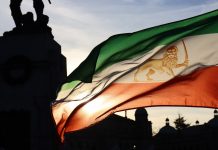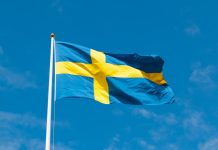Romanian priest Sorin Grecu who staged a hunger strike to demand the removal of a statue of Lenin, has died, the Romanian embassy in London said. He was 61.
Fr Grecu had been hospitalized since December 2021 in London with Covid-19. He died this week.
Hunger strike
As a young priest he went on a hunger strike in Bucharest in March 1990 because the city hall ignored his request to remove the statue.
It was three months after communism ended in a bloody revolt, but former communists retained their grip on power.
Together with crane operator Gheorghe Gavrilescu who worked at the Braşov Tractor plant, they managed to pull down the giant bronze statue.
His four-day protest was successful in the sense that the new government turned a blind eye to the removal, but authorities continued to harass him, he said.
Communist apparatchik
Communist leader Nicolae Ceausescu had been toppled and executed and former communist apparatchik Ion Iliescu had come to power and was on the brink of a landslide victory in presidential elections.
“How can it be so hard to demolish a seven-ton statue when (the communists) would knock down a church overnight, and there would be flowers on the same spot the next day?”
he said at the time, remembering the demolition of churches under the communist regime.
Fr Grecu said he received threats and sought asylum in Britain which he eventually received four years later.
Letters
“The letters came every day, and they had an official stamp. If I had been a monk, a friar, I didn’t have a family, maybe I’d have risked more.”
In the UK, he worked as a plasterer and a night club bouncer as well ascontinuing to minister as an Orthodox priest.
“I was a bodyguard in club for 19 years, with beatings, drugs, knives and broken bottles. I did it to take care of my family,”
Orthodox parish
Born in the southern mountain town of Câmpulung, Fr. Grecu set up an Orthodox parish in Ilford, east London, where many Romanians lived in the early 1990s. The parish then moved to a Red Cross building in Chelsea in 1997.
He celebrated services with other Greek Orthodox priests in East Ham between 1997 and 2012. After that he celebrated services in Romanian to the growing community.
Newham in east London has one of the largest Romanian populations in London according to the Office for National Statistics.
Government data for 2010 showed that people from Romania made up 11 per cent of the population.
Great Schism
The Orthodox branch of Christianity split from the Catholic church in what is known as the Great Schism in 1054. There are around 200 million people worldwide who profess Orthodox Christianity.
After obtaining political asylum, Fr Grecu wasn’t allowed to return to Romania until 2003, the year before the country joined NATO.
Anti-Communist resistance
In 2016, he returned to Bucharest for the unveiling of the „Wings” monument to commemorate the anti-Communist resistance.
It was a poignant moment for the Romanian priest. The monument went up on the same spot where the statue of Vladimir Lenin had stood for decades.
Ceausescu, Gorbachev and the anti-atomic bunker that blocked the Romanian leader’s escape in 1989




